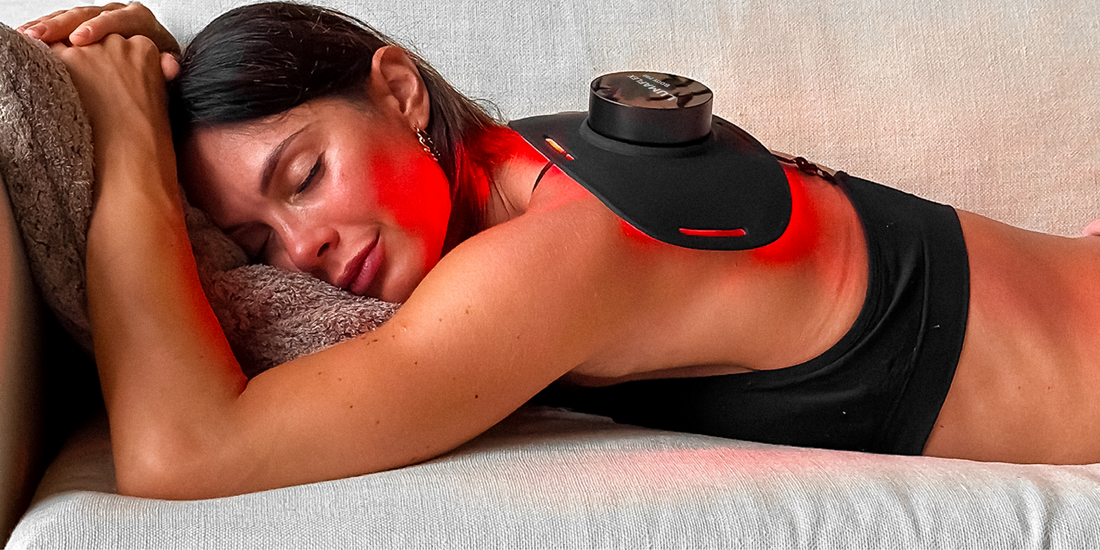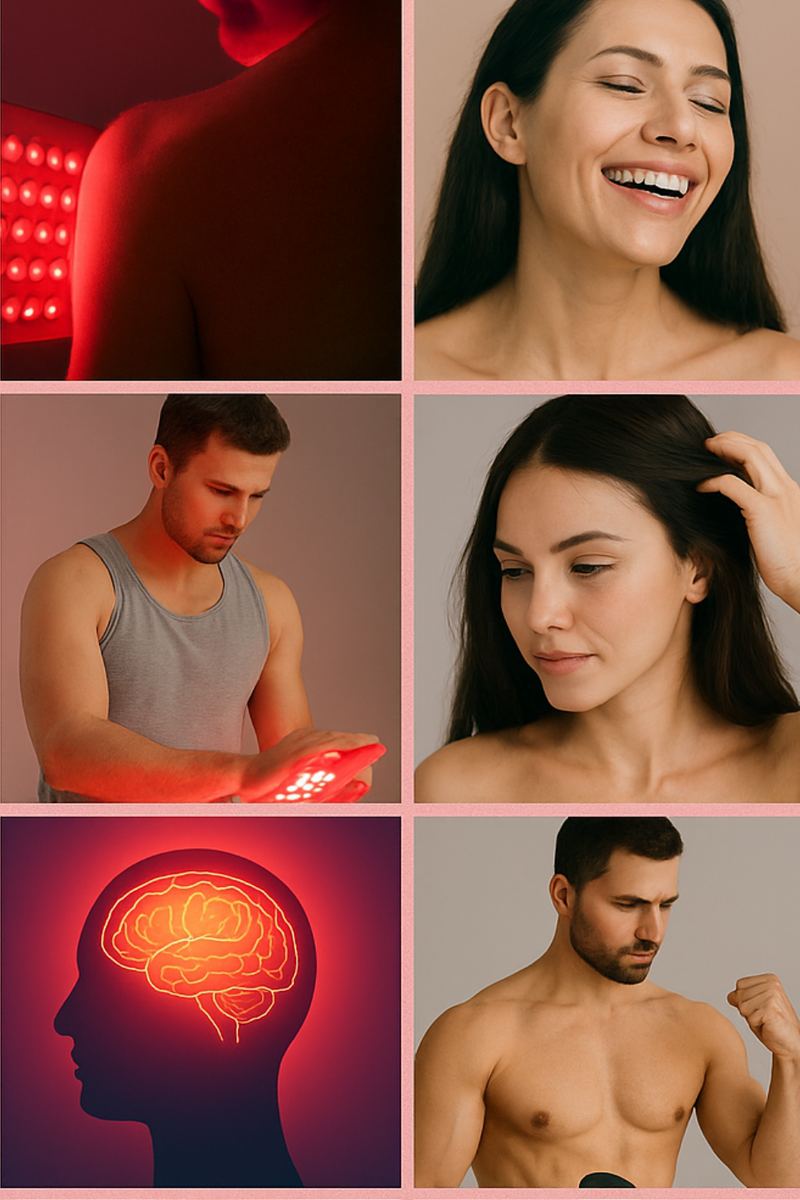
Top 10 Proven Benefits of Red & Near-Infrared Light Therapy
Key Takeaways
- Red light therapy is backed by thousands of clinical studies showing real health benefits.
- It’s not just about beauty — it supports skin, sleep, brain, bone, and body fat reduction.
- Benefits span from wrinkle reduction and hair growth to faster recovery, less pain, and improved circulation.
- Evidence suggests red/NIR light may even help with brain repair, bone density, and hormone balance.
- When paired with exercise or recovery routines, results are often amplified.
- Unlike drugs or surgery, it’s a non-invasive, side-effect–free therapy suitable for daily wellness.
The Top 10 Benefits of Red & Near-Infrared Light Therapy
Red and near-infrared light therapy isn’t just another wellness trend, it’s quickly becoming one of the most researched and validated technologies in modern health science. What started decades ago in clinical settings with lasers has now expanded into everyday life, thanks to safe and affordable LED-based devices.
Introduction

Red and near-infrared light therapy isn’t just hype—it’s one of the most researched wellness technologies available today. Originally developed by NASA in the 1990s to support wound healing in space, red light therapy has since been studied in thousands of clinical trials. From glowing skin to deeper sleep, faster muscle recovery, and even cognitive support, the science is stacking up.
Think of it as “cellular fuel.” Red and near-infrared light penetrate your tissues, energizing your mitochondria (your cells’ power plants). The result? Better energy production, circulation, and repair—benefits you can feel and see.
Below, we break down the top 10 proven (and promising) benefits of red light therapy—so you can decide how it may help you look, feel, and perform at your best.
Benefit #1: Healthier, More Youthful Skin
Red light therapy is famous for helping skin look and feel its best. It can reduce fine lines, improve elasticity, and boost collagen production.
Research shows that people treated with red/near-infrared light saw noticeable improvements in skin texture and firmness. (source)
Why it matters: Your skin looks smoother, firmer, and more radiant—naturally.
Benefit #2 Natural Pain & Inflammation Relief
From sore joints to stiff muscles, red and near-infrared light can calm inflammation and ease discomfort.
Clinical studies in people with knee osteoarthritis found light therapy reduced pain and improved mobility. (source)
Why it matters: A drug-free, gentle way to feel better and move more easily every day.
Benefit #3: Faster Muscle Recovery
Whether you’re an athlete or just active, red light helps muscles bounce back faster.
Research shows athletes using red light before and after training experienced less soreness and better performance. (source)
Why it matters: Train harder, recover quicker, and feel stronger day to day.
Benefit #4: Thicker, Healthier Hair
Red light stimulates hair follicles and increases scalp blood flow, promoting natural hair growth.
Clinical trials show men and women with thinning hair saw increased density after using red light therapy. (source)
Why it matters: A non-invasive solution for fuller, healthier hair.
Benefit #5: Better Sleep & Rested Nights
Red light in the evening can help regulate melatonin and support healthy sleep cycles.
Studies show athletes receiving red light therapy before bed improved sleep quality and hormone balance. (source)
Why it matters: Sleep deeper, wake refreshed, and recover faster.
Benefit #6: Sharper Brain & Mental Clarity
Red and near-infrared light may boost memory, focus, and mood.
Patients with mild brain injuries and dementia saw improvements in cognition, sleep, and emotional well-being after light therapy. (source, source)
Why it matters: Think clearer, focus better, and support long-term brain health.
Benefit #7: Boost Testosterone Naturally (Animal Evidence)
Early studies in animals show red/NIR light can raise testosterone levels.
Why it matters: Preliminary findings are promising for energy, vitality, and hormone balance—though human studies are still needed.
Benefit #8: Stronger Bones
Red and near-infrared light can improve bone density and accelerate healing after injury.
Studies in animals show improved bone mineralization and osteoblast activity with light therapy.
Why it matters: Supports stronger, healthier bones as you age or recover from fractures.
Benefit #9: Faster Wound Healing
Cuts, scrapes, and surgical wounds may heal faster with red light therapy.
A review of 68 studies confirms red and near-infrared light promotes skin and tissue repair. (source)
Why it matters: Helps your body repair itself more efficiently and reduces downtime from injuries.
Benefit #10: Support Fat Loss & Lean Muscle
Red light therapy may help target stubborn fat, especially when paired with exercise.
Studies show people combining light therapy with workouts lost significantly more fat than exercise alone. (Brazilian study 2015, US study 2013)
Why it matters: Enhance your fitness results safely and naturally, without extreme diets or supplements.
Quick Reference: Top 10 Benefits of Red & Near-Infrared Light
*Human studies for testosterone are limited; most evidence comes from animal trials.





